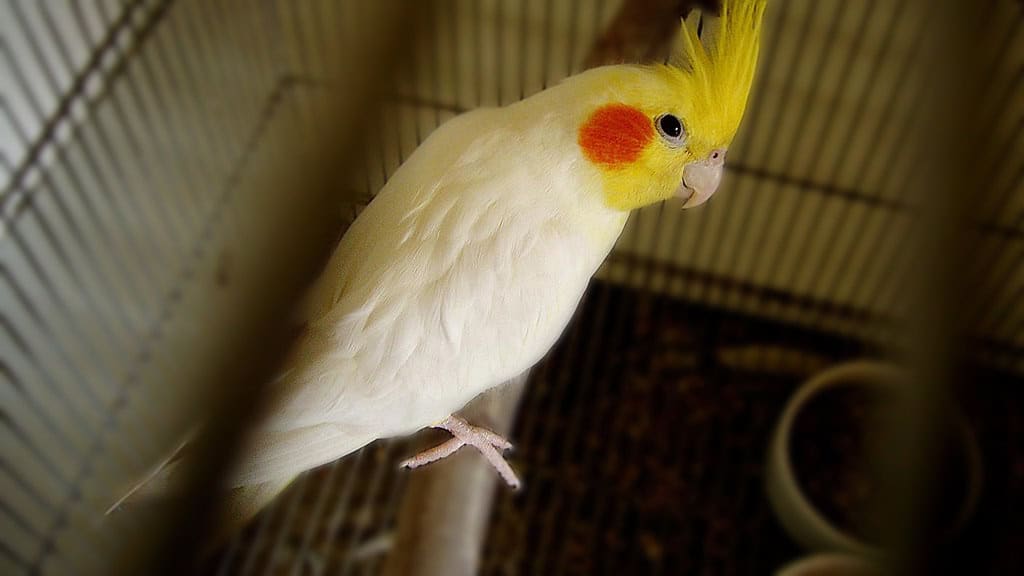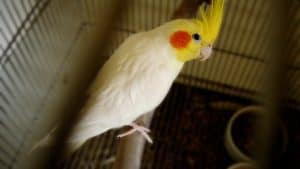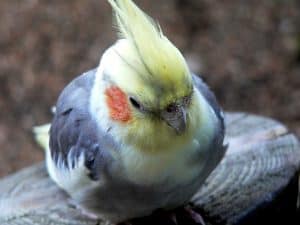Deciding on a pet is no small feat, and when it comes to birds, cockatiels are among the most charming companions you can find. They’re known for their playful personalities and striking appearance, but how do you select your cockatiel? It’s not just about choosing the prettiest bird in the store; there’s a lot to consider to ensure you and your new feathered friend are a perfect match.
I’ll guide you through the essential factors to consider, from understanding their health and temperament to recognizing the signs of a well-socialized bird. Picking the right cockatiel can be a delightful process if you know what to look for. Let’s dive into what makes these birds special and how to ensure you bring home the perfect one.
Understanding Cockatiels as Pets
Cockatiels stand out as exceptional pets due to their sociable and affectionate nature. I’ll explore why these birds, with their distinct personalities and needs, make such wonderful companions, focusing on two critical aspects of cockatiel care and ownership.

Reasons to Choose a Cockatiel
Cockatiels are renowned for their friendly demeanor, making them ideal for families and individuals alike. They’re highly trainable, often learning tricks and mimicking sounds, which enhances the bonding experience. Their ability to interact positively with humans stems from their sociable nature. Additionally, cockatiels possess a playful charm, boasting a variety of colors from the classic gray cockatiels to the striking yellow cockatiel, providing aesthetic pleasure to their owners.
Moreover, cockatiels require moderate care, which makes them suitable for owners who can commit a few hours daily to interact with their pet. Their dietary needs are straightforward, primarily consisting of pellets, seeds, and fresh fruits and vegetables, ensuring they receive the required nutrition. The relatively simple requirements for maintaining a healthy bird make cockatiels an excellent choice for first-time bird owners.
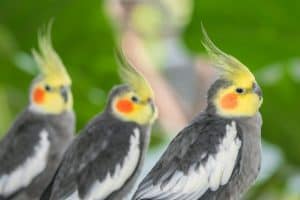
Lifespan and Commitment
Cockatiels have a considerable lifespan, typically ranging between 15 to 20 years. This longevity requires a long-term commitment from potential owners, as these birds thrive on stability and affection. Understanding that you’re embarking on a multi-decade relationship will help you assess whether a cockatiel is the right companion for you.
The commitment to a cockatiel extends beyond just time. It involves regular socialization to keep the bird engaged and mentally healthy. Cockatiels left alone for long periods may develop behavioral issues, such as feather plucking or excessive screaming. Thus, regular interaction is vital, as is creating a safe, stimulating environment with an appropriate bird cage and toys that can accommodate their active nature.
By understanding these aspects of cockatiel care and commitment, you’ll be better equipped to decide if a cockatiel is the right companion for your family or lifestyle, ensuring a happy and healthy relationship with your feathered friend.
How Do You Select Your Cockatiel?
When I dive into the process of selecting a cockatiel, I focus on various critical factors to ensure a perfect companion. Here’s what I consider important:
Age and Health
Before choosing a cockatiel, I inspect the bird’s age and health meticulously. Generally, a healthy bird showcases active behavior, clear eyes, and clean feathers. I prefer to select young birds that are fully weaned. This age is usually between 8 and 12 weeks when they’re easier to train, and you can mold their social behaviors effectively.
It’s important to engage a vet to assess the bird’s health, potentially preventing issues like fatty liver syndrome which is prevalent in cockatiels. Healthy birds should not exhibit signs of lethargy or physical abnormalities. When visiting pet shops or bird fair, I ensure the bird’s breathing is unlabored and the feathers are well-groomed.
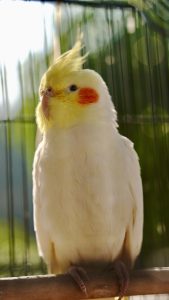
Temperament and Behavior
Temperament and behavior significantly influence my selection process. I spend time observing the bird in various situations to get a sense of its personality. Cockatiels with a friendly and curious demeanor are ideal as they’re likely to adapt better to new environments and be trainable.
Signs of a well-adjusted bird include chirping contentedly, active engagement with humans, and playing with toys. It’s crucial to avoid birds that seem overly aggressive or unusually withdrawn, as these traits might pose challenges in training and adaptation.
Physical Appearance
The physical appearance of a cockatiel can tell you much about its breed and overall health. I prefer cockatiels with bright, clear eyes and vibrant feathers. Classic gray cockatiels are common, but I also find cinnamon cockatiels or those with mostly gray feathers charming.
It’s fascinating to see variations such as the multiple albino birds, which are totally white, or those with predominant white or yellow features. Physical markers such as tiny orange patches on the cheeks are standard and desired. The condition of the bird’s feathers is important; they should be smooth and well-arranged, not ragged or dirty, indicating good health and care.
By inspecting these aspects, I optimize the chances of taking home a companion bird that is not only healthy but also a joyous addition to my home. Each factor plays a pivotal role in determining the right cockatiel for a lasting and rewarding relationship.
Essential Care for Cockatiels
After choosing the perfect cockatiel, ensuring it enjoys a healthy and vibrant life depends largely on how you manage its care. Here, I discuss the crucial aspects of diet and nutrition along with cage setup and environment, which are critical for your companion bird’s well-being.
Diet and Nutrition
Cockatiels thrive on a varied diet that supports their nutritional needs. Here are key points to consider:
- Diverse Diet: It’s vital to provide a balanced mix of seeds, pellets, and fresh fruits and vegetables. Avoid feeding only seeds, as this can lead to nutrient deficiencies. Incorporate pellets that are specifically made for cockatiels, as they contain the appropriate vitamins and minerals.
- Fresh Foods: Adding fresh foods to their diet helps prevent boredom and provides essential vitamins and nutrients. Suitable options include dark, leafy greens like spinach and kale, along with carrots, peas, and apples. Always ensure these are washed thoroughly to remove any pesticides.
- Calcium and Vitamins: Cockatiels often require extra calcium, especially the females, to prevent egg binding in breeding birds. Cuttlebone or mineral blocks can serve this purpose. Also, consider vitamin supplements if recommended by an avian vet, especially during the molting period.
- Clean Water: Always ensure they have access to clean, fresh water. Change it daily to prevent the growth of bacteria.
Cage Setup and Environment
Creating an inviting and safe environment is essential for your cockatiel’s health and happiness. Optimize these environments:
- Cage Size and Placement: Cockatiels need space to move freely between perches. The ideal cage size should be at least 20 inches long, 20 inches wide, and 24 inches high. Place the cage in an area that avoids direct sunlight and draft but allows some part of the day to be spent in gentle, filtered light.
- Safety and Comfort: The bird cages should be secure, with no sharp edges or loose components. Perches should be varied in size to keep their feet healthy, and the cage floor covered with paper that is easy to change and keep clean.
Post a variety of fully weaned young bird might require: include chewable toys and a swing which offers mental stimulation and physical exercise. - Social Interaction: Cockatiels are social creatures. Place their cage where family interaction is frequent but not too noisy or overwhelmingly bustling. This stimulates their mental health and mimics their natural social environment.
By addressing these nutritional and environmental needs, you provide your cockatiel with a foundation for a healthy and joyful life. Always monitor your pet’s health and behavior, and don’t hesitate to consult with avian vets if any issues arise.
Common Health Concerns
When selecting a cockatiel, understanding potential health concerns is crucial. I’ll guide you through recognizing signs of illnesses, which is essential for choosing a healthy young bird and maintaining its health once it joins your family.
Signs of Illness
Identifying signs of illness early can save your cockatiel from severe health issues and ensure a long, happy life with its new family. Here are some common symptoms to watch for:
- Feather Changes: A healthy cockatiel boasts smooth, brightly colored feathers. Any appearance of ruffled, plucked, or excessively dirty feathers could indicate stress or illness.
Displaying Changes in Activity: If a normally active bird becomes lethargic or excessively sleepy, it might be unwell. - Respiratory Issues: Be mindful of any wheezing, coughing, or difficulty breathing. These symptoms suggest respiratory infections which are common in birds kept in poor conditions.
- Changes in Droppings: Healthy bird droppings are generally solid and clear, with minimal smell. Any drastic change in color, consistency, or smell could signal a problem.
- Weight Fluctuations: Weight loss or an overly thin appearance is often the first sign of illness. Conversely, unexpected weight gain should also raise concerns.
- Behavioral Shifts: Watch for any changes in behavior such as aggression, lack of singing or chirping, or changes the way bird eats, as these can all be indicators of stress or illness.
Regular interaction and monitoring can greatly assist in the early detection of these signs. Additionally, establishing a relationship with an avian vet can provide professional guidance and peace of mind. When I visit my local bird club or consult with reputable bird breeders, I always emphasize the importance of regular health check-ups and early intervention if signs of illness appear.
Choosing the right cockatiel involves more than just falling for the cutest one you see; it requires careful consideration of their health temperament and care needs. Remember that a healthy bird is a happy bird and paying attention to the signs of illness can save you and your feathered friend from future distress.
Don’t forget the importance of a proper diet and a comfortable living environment which are crucial for their overall well-being. With the right approach and commitment cockatiels make delightful and loving pets that can bring a lot of joy to your home. So take your time select wisely and prepare to enjoy the unique companionship of your new cockatiel.
Frequently Asked Questions
Which color cockatiel is best?
The most common and traditionally preferred color is the grey or “wild-type” due to its robust nature and wide availability. However, the best color is subjective and should align with the owner’s preference.
When can you tell if a cockatiel is male or female?
The sex of a cockatiel can usually be determined by color and behavior patterns after their first molt, around 6 to 12 months of age. DNA testing provides a more definitive answer.
Do male or female cockatiels talk better?
Male cockatiels are generally better talkers. They are known to mimic sounds and words more frequently and clearly than females.
How to choose a good cockatiel?
Choose a cockatiel with bright, clear eyes, smooth beak alignment, and complete, clean feathers. Observe the bird’s behavior; a healthy cockatiel should be active and alert.
How many days can a cockatiel be left alone?
Cockatiels should not be left alone for more than 24 hours without checking. If you need to leave your pet for a longer period, consider arranging for someone to care for them daily.
